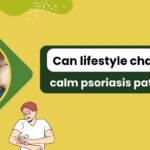Want to live a normal life with Parkinson’s?
Degeneration of nerve cells in the substantia niagra, a part of the brain that controls movement, causes a progressive disorder called Parkinson’s. These nerve cells lose their capacity to produce dopamine, a crucial neurotransmitter, when they malfunction or die. An approximate loss of eighty percent or greater in dopamine-producing cells in the substantia niagra leads to the development of Parkinson’s symptoms.
Dopamine typically works in tandem with other neurotransmitters to help coordinate the millions of nerve and muscle cells involved in movement. Without enough dopamine development, the balance is affected, causing Parkinson’s symptoms, such as trembling in the hands, arms, legs, or jaw, rigidity or stiffness of the limbs, slowed movements, and problems with balance and coordination.
Parkinson’s disease consists of a combination of motor and non-motor symptoms. Below are some of the most prevalent motor signs.
- Tremor. Initially affecting only one hand, a mild shaking or tremor can occur at rest. Gradually, it could affect other parts of the body
- Bradykinesia. Slowed down movements, resulting in difficulty with performing routine activities, such as walking, buttoning up a shirt, getting out of a chair, etc.
- Rigidity. Stiff movement of limbs, neck, or trunk, contributing to muscle pain and impaired posture
- Postural issues. Problems with coordination and maintaining balance, causing difficulties with maintaining the right posture, and an increased risk of falls
Below-given are a few of the non motor symptoms of parkinson’s disease that may sometimes precede or accompany the movement-related symptoms.
Parkinson’s disease can generate a variety of non-motor symptoms in addition to motor symptoms, which may come before or after the movement-related symptoms. These may consist of:
- Loss of Smell (Anosmia): A reduced ability to identify smells
- Sleep disturbances include REM sleep behavior disorder (acting out dreams while you sleep), insomnia, and restless legs syndrome
- Autonomic Dysfunction: Issues with the body’s autonomic processes, including digestion, bladder control, and blood pressure management
- Cognitive Changes: Mild cognitive impairment, executive function issues, and, in the very late stages, dementia may occur
- Mood Disorders: Parkinson’s disease frequently causes mood swings, including depression, anxiety, and apathy
Why does the condition occur?
The only known causes of Parkinson’s disease are hereditary, even though there are a number of known risk factors for the condition, such as pesticide exposure.
Triggering factors
- Genetics: Between 10% and 15% of all cases of Parkinson’s disease are thought to be genetically based. People who have a parent or sibling with Parkinson’s disease are about twice as likely to get the disease themselves. SNCA, PARK2, PARK7, PINK1, and LRRK2 are among the genes associated with Parkinson’s disease.
- Exposure to toxins: According to some scientists and medical professionals, exposure to toxins may marginally raise the risk of Parkinson’s disease. This includes exposure to organic pollutants, solvents, manganese and other metals, Agent Orange, pesticides, and herbicides.
- Getting older: The risk of Parkinson’s disease is influenced by age, as should be expected. Given that Parkinson’s disease often manifests at age 60, advanced age is the biggest known risk factor for the condition. Parkinson’s disease that manifests before the age of fifty is referred to as young-onset Parkinson’s disease.
- Neurodegeneration: The gradual progressive degeneration of dopamine-producing neurons in the brain’s substantia nigra is a hallmark of Parkinson’s disease. It is thought that these neurons’ malfunction and eventual degeneration are caused to some extent by the buildup of abnormal protein aggregates, especially alpha-synuclein.
- Inflammatory Processes: Parkinson’s disease can develop and worsen as a consequence of persistent inflammation in the brain. Parkinson’s disease patients’ brains have been shown to have immune system and microglial activation, which may indicate a connection between neuroinflammation and disease pathology.
Can Parkinson’s be treated?
For Parkinson’s disease, there is no one-size-fits-all treatment process. Instead, collaborative decision-making with your healthcare professional should be used to customize treatment according to each patient’s unique symptoms. Treatment can involve self-care measures like exercise or supervision-based practices like physical therapy, occupational therapy, and speech or talk therapy. It might also include prescription medications tailored to your specific needs, like those that help you move better or ones that treat symptoms that don’t involve movement, like sleep, constipation, or urine problems. Parkinson’s disease can often be best treated as a collaborative effort, with you, the person with PD, at the center and your care partner, parkinson’s disease specialist, therapist, and other medical professionals who address certain symptoms.
Parkinson Natural Treatment
Natural parkinson’s disease cures and treatments aim to reduce symptoms and delay the disease’s rapid progression. Parkinson’s disease and other neurological conditions can be treated with a variety of treatment approaches. The choice of treatment regimen and medicine for parkinson depends on the severity of Parkinson’s disease and how the body responds to medication. Even though there are advantages to each treatment plan, selecting the best one can occasionally be challenging. Individuals who suffer from this neurological condition search for a parkinson disease treatment plan that is the least invasive, efficient, promotes a natural healing process, and has no negative side effects.
The main reasons why people are turning to natural treatments for Parkinson’s disease are the side effects and inefficiency of contemporary drugs. Among the most popular medical systems in India that use natural cures and therapies are Ayurveda, Yoga, Unani, Siddha, Homeopathy, and Naturopathy. These non-allopathic medical systems still provide healthcare to about 70% of India’s 1.1 billion people. Examples of natural medical practices that have recently gained popularity include homeopathic medicine for Parkinson’s disease and ayurvedic therapy for the condition.


